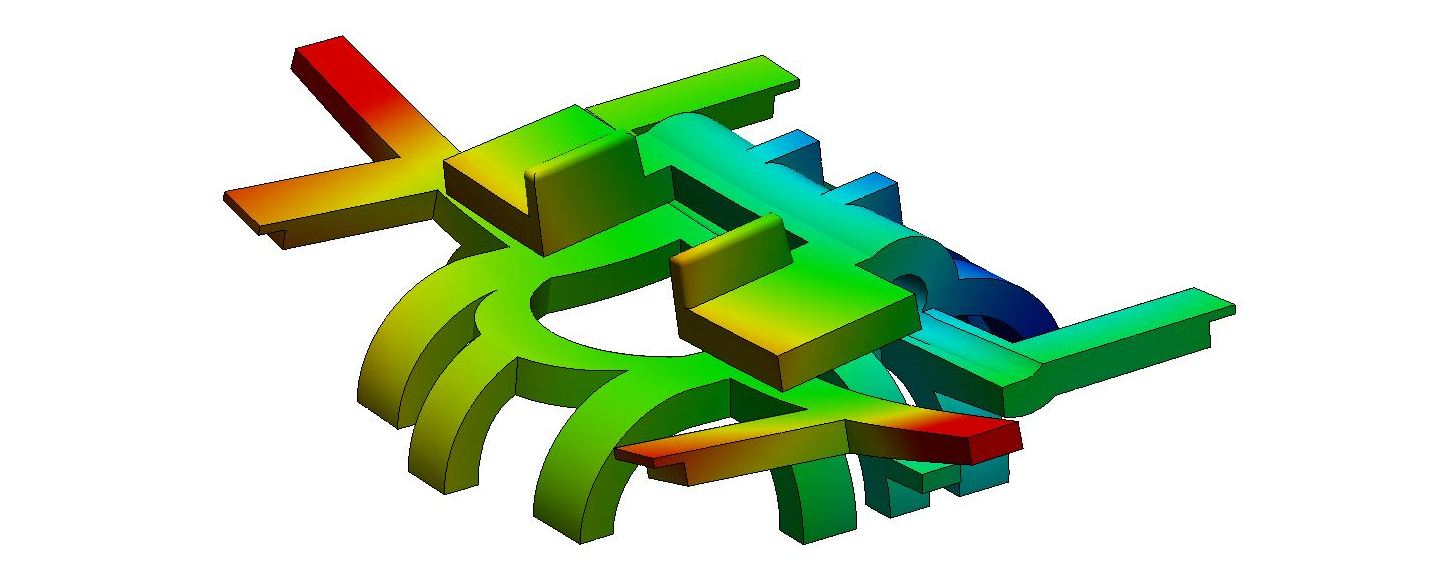
At Key Tech, we are strong believers that there is no substitute for getting our hands on a part. However, this is not always feasible, especially early in the design of a product. Finite Element Analysis (FEA) is a powerful tool that allows us to simulate and understand the behavior of components or systems when it would be impractical to examine them empirically. Key Tech uses both Solidworks Simulation and ANSYS to conduct FEA. We have extensive experience with both software packages and have employed them for a variety of applications.
Static (or structural) loading is one of the most common scenarios we examine using FEA. Many 3D printing techniques, such as Stereolithography (SLA), require specialized materials with properties (such as strength and stiffness) that often differ significantly from common plastics used for injection molding and machining. By using FEA, we can ensure that a part made using production materials and processes will meet the necessary requirements, even if its 3D-printed counterpart does not. Static FEA can also help us understand the how the part will deflect or fatigue over time. In situations where weight is a concern, static FEA can help to identify the best areas to target for material removal.
Complex electromechanical devices often include actuators, springs, and dampers. For complex motion and vibration, dynamic FEA can help us understand how the system will behave in various states. This allows us to identify and mitigate potential issues before we create prototypes, reducing the time needed for troubleshooting and iteration. In systems where vibrational resonance may be a concern, a modal analysis can be conducted to identify frequency ranges that should be avoided.
With experience in designing devices for thermally-intensive processes such as PCR, Key Tech is skilled in conducting thermal analysis of systems using FEA. From basic thermal applications such as heatsink design to complex, multidisciplinary simulations that require coupled-field analysis, we can ensure that extreme temperatures do not interfere with the functionality of the system. One common use of thermal FEA is to ensure that differential thermal expansion does not impart undue stress or deformation onto the system.
Key Tech’s FEA capabilities are not limited to the above. In the past, we have also used FEA to examine systems for other considerations, such as fluidics (CFD) and electromagnetics. We are happy to discuss your particular design and FEA needs with you. Contact us.
